Blog Log, 27 June 2009 (Part 2)
 July 1, 2009
July 1, 2009
This is the first time I’ve split a Blog Log into two. It was hard to decide which pictures to highlight and which to just leave in the gallery for you to explore on your own. I decided every critter plays an important part not just on the reef but their records are nearly all as important and it’s hard to guess how readers like yourself will be inspired by what you see here on the Blog. Above are 2 of several colourful fish on the reef and both very photogenic and less skittish then some of the fishes you saw in Part 1 of this Blog Log. Left-Right: Copper-banded butterflyfish and Tomato clown anemonefish.
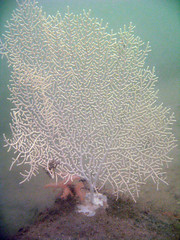

Though they used to be common as recently as the late 80s, its hard to find large gorgonian corals (also known as seafans) in the reefs around Hantu (large seafans can still be found in the islands further south of Hantu). Whatever corals that remain are fighting hard to survive the challenging environmental conditions that are constantly changing. They provide unique habitats for specialised creatures and of course beautify the reef. Because of their intricate patterns, they were extensively harvested to supply the aquarium trade and also as curio items. Left-Right: Gorgonian coral and detail.
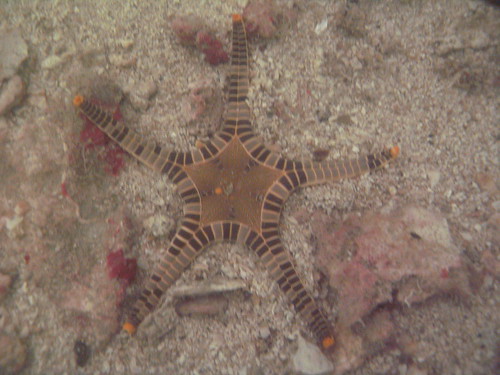
Icon seastar – the most beautiful seastar, to me anyways. On my very first dive in Hantu over 5 years ago, I was left unquided to wander intrepidly in the murky waters. I didn’t know what to look out for or where to go. The ONLY creature I saw was this seastar, which has for me, lived up to its name. Mesmerised by its beautiful mosaic outline, and also compounded by the fact that I’d never seen such a seastar anywhere in the world before, I felt our reefs possessed something unique, something worth educating others about, and definitely, was something worth exploring. Today, this seastar, like several species of corals, is threatened by the curio trade. Without marine protection laws in Singapore, anything is finders keepers.
Left-Right: Algae bloom and coral bleaching. Some parts of the reef are suffering algal blooms or bleaching. Though these are both natural processes, if they happen too fast or are accelerated by human-influenced environmental changes, they could have a severe impact on the reef. Algae, which grows very fast, competes with the coral for space and sunlight. Bleaching occurs when for various reasons, the zooxanthellae (a kind of algae living in the coral tissue that gives the coral it’s colour) leaves the transparent tissue of the coral, leaving us to only see the white colour of its skeleton. Without the zooxanthellae, the coral’s growth is reduced because its unable to get the extra sugars that are secreted by the zooxanthellae when they photosynthesize. When it’s unable to compete with faster growing organisms like algae, the reef structure begins to disintergrate. After a coral is bleached, it does not mean it is dead and if conditions become favourable the zooxanthellae can return to the coral’s tissue again.
Despite some areas tat have been damaged, most of the reef appears to have much healthy looking coral such as these Mushroom corals that are the largest coral polyps and which are also “free-living”. That means they can move themselves on the reef unlike other corals (such as those below) that remain fixed onto the reef.
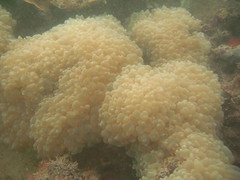
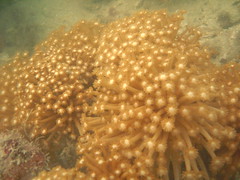
Healthy submassive corals – Left-Right: Bubble coral and Goniopora coral
More pictures at The Hantu Blog Gallery
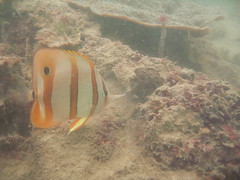
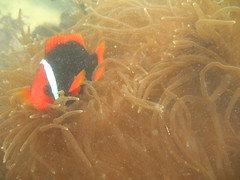
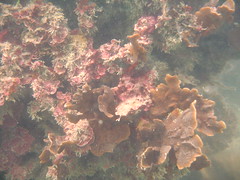
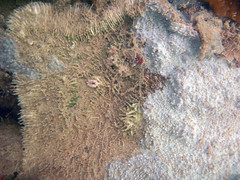

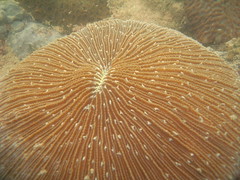
 Posted in
Posted in 



 content rss
content rss
COMMENTS